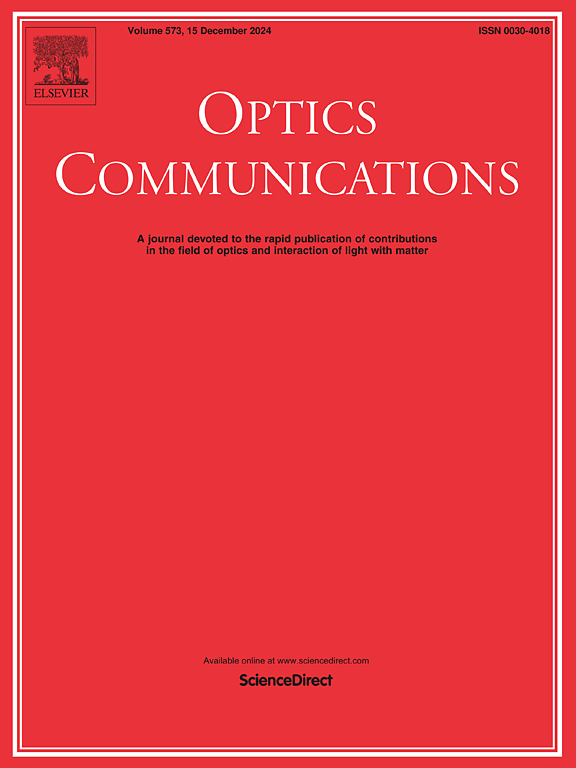Bi-directional SMF-NDF-optical/5G NR wireless converged systems
IF 2.2
3区 物理与天体物理
Q2 OPTICS
引用次数: 0
Abstract
This study presents the transmission of fifth-generation (5G) new radio (NR) signals over bi-directional single-mode fiber (SMF)-negative dispersion fiber (NDF)-optical/5G NR wireless converged systems, using two cascaded reflective semiconductor optical amplifiers (RSOAs). Downstream transmission of 5G NR 16-quadrature amplitude modulation (QAM) signals achieved an aggregate net bit rate of 228.037 Gb/s, comprising 59.813, 74.766, and 93.458 Gb/s at 150, 250, and 325 GHz, respectively. The system achieved a low bit error rate (BER) and clear constellation patterns. However, systems without NDF exceed the forward error correction 7% threshold, indicating the importance of NDF in compensating for fiber dispersion. Moreover, for upstream transmission, two cascaded RSOAs are used to transmit 5G 16-QAM-orthogonal frequency division multiplexing signals, achieving a total data rate of 40 Gb/s. The use of two cascaded RSOAs in the system significantly improved upstream performance, resulting in low BERs and clear constellation patterns. This system not only achieved high data rates but also extended transmission coverage to support the deployment of advanced 5G NR applications.
双向 SMF-NDF- 光/5G NR 无线融合系统
本研究介绍了利用两个级联反射半导体光放大器(RSOA)在双向单模光纤(SMF)-负色散光纤(NDF)-光/5G NR 无线融合系统上传输第五代(5G)新无线电(NR)信号的情况。5G NR 16-quadrature amplitude modulation (QAM) 信号的下行传输实现了 228.037 Gb/s 的总净比特率,在 150、250 和 325 GHz 频率下分别为 59.813、74.766 和 93.458 Gb/s。该系统实现了较低的误码率(BER)和清晰的星座模式。然而,没有 NDF 的系统超过了前向纠错 7% 的阈值,这表明 NDF 在补偿光纤色散方面的重要性。此外,在上游传输中,使用两个级联 RSOA 传输 5G 16-QAM 正交频分复用信号,实现了 40 Gb/s 的总数据传输速率。在系统中使用两个级联 RSOA 极大地提高了上行性能,从而实现了低误码率和清晰的星座模式。该系统不仅实现了高数据传输速率,还扩大了传输覆盖范围,为部署先进的 5G NR 应用提供了支持。
本文章由计算机程序翻译,如有差异,请以英文原文为准。
求助全文
约1分钟内获得全文
求助全文
来源期刊

Optics Communications
物理-光学
CiteScore
5.10
自引率
8.30%
发文量
681
审稿时长
38 days
期刊介绍:
Optics Communications invites original and timely contributions containing new results in various fields of optics and photonics. The journal considers theoretical and experimental research in areas ranging from the fundamental properties of light to technological applications. Topics covered include classical and quantum optics, optical physics and light-matter interactions, lasers, imaging, guided-wave optics and optical information processing. Manuscripts should offer clear evidence of novelty and significance. Papers concentrating on mathematical and computational issues, with limited connection to optics, are not suitable for publication in the Journal. Similarly, small technical advances, or papers concerned only with engineering applications or issues of materials science fall outside the journal scope.
 求助内容:
求助内容: 应助结果提醒方式:
应助结果提醒方式:


